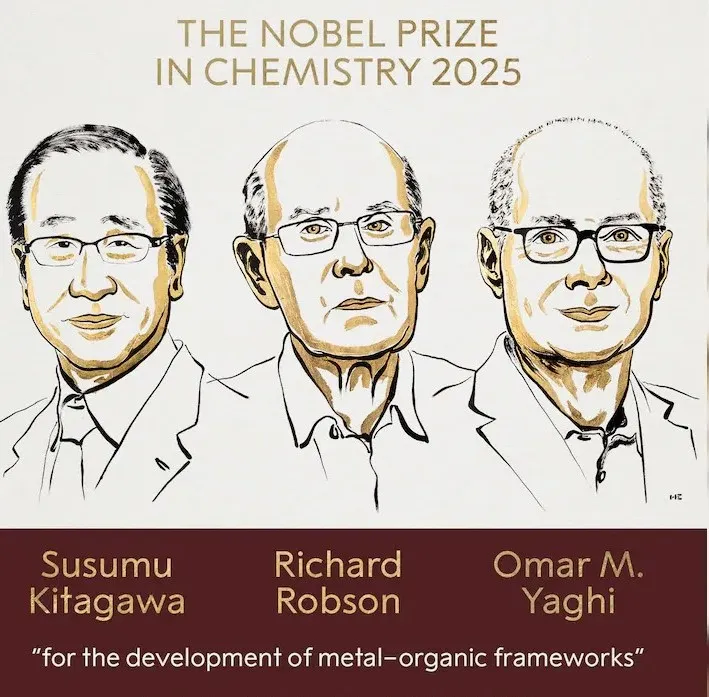

Nobel Prize Awarded for "Molecular Rooms" That Could Reshape Our World
The 2025 Nobel Prize in Chemistry has been awarded to a trio of pioneering scientists—Susumu Kitagawa, Richard Robson, and Omar M. Yaghi—for their groundbreaking development of a revolutionary class of materials known as metal-organic frameworks, or MOFs. The Royal Swedish Academy of Sciences honored the laureates for creating what are essentially "molecular rooms for chemistry," highly porous, crystalline structures with the vast potential to help solve some of the world's most pressing sustainability challenges.
Building a Molecular Sponge
At its core, the science behind MOFs is a form of molecular architecture. The process involves linking metal ions with organic molecules to create rigid, three-dimensional frameworks with enormous internal surface areas. These nanoscopic structures are akin to highly advanced sponges, containing a network of tiny, purpose-built cavities or "rooms" that can be designed to trap, store, and manipulate specific gases and molecules.
This unique property allows them to perform an array of remarkable functions that were previously unimaginable. By designing these frameworks with specific sizes and chemical properties, scientists can create materials tailored for a wide range of applications, from capturing greenhouse gases like carbon dioxide directly from the atmosphere to filtering toxic pollutants from water and storing clean fuels like hydrogen with unprecedented efficiency.
The Foundational Breakthroughs
The journey to this revolutionary technology began in the late 1980s and was built upon the distinct contributions of the three laureates. Richard Robson of the University of Melbourne laid the initial groundwork in 1989, demonstrating that it was possible to assemble metal ions and organic molecules into spacious crystalline frameworks. Though his early structures were unstable, his work was the conceptual spark that inspired the field.
In the 1990s, Susumu Kitagawa of Kyoto University made the next crucial breakthrough. He was the first to show that these frameworks were not just rigid structures, but that they could exhibit flexibility, demonstrating their ability to absorb and release gases. This discovery proved that MOFs could function as dynamic storage vessels, opening the door to their practical application.
Building on this foundation, Omar M. Yaghi of the University of California, Berkeley, engineered the first exceptionally stable MOFs. More importantly, he introduced the principles of rational design, creating a systematic approach that allows chemists to precisely construct and fine-tune these materials to achieve desired properties. This transformed the field from one of experimental discovery to one of intentional, precision engineering.
A New Frontier for Sustainable Chemistry
The work of these three pioneers has unlocked a new frontier in materials science. Since their initial discoveries, tens of thousands of unique MOFs have been synthesized, each with the potential for new and innovative functions. The applications are vast and directly address critical global challenges. Scientists are now using MOFs to harvest water directly from desert air, to act as highly efficient catalysts in chemical reactions, and to develop more effective drug delivery systems.
As Heiner Linke, Chair of the Nobel Committee for Chemistry, noted, "Metal-organic frameworks have enormous potential, bringing previously unforeseen opportunities for custom-made materials with new functions." The 2025 Nobel Prize in Chemistry is not just an acknowledgment of a brilliant scientific discovery; it is a celebration of a foundational technology that has paved the way for a more sustainable and efficient future.